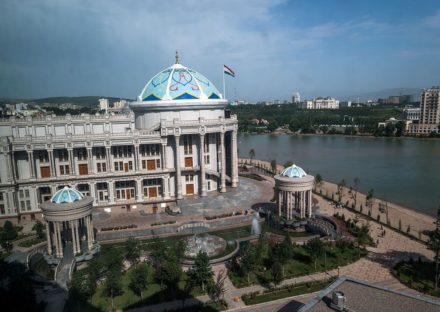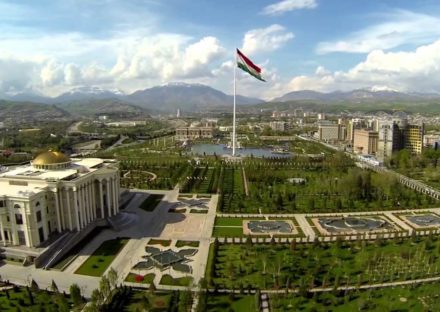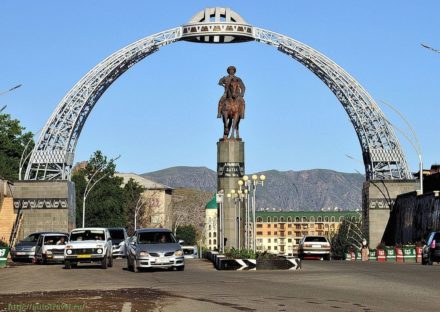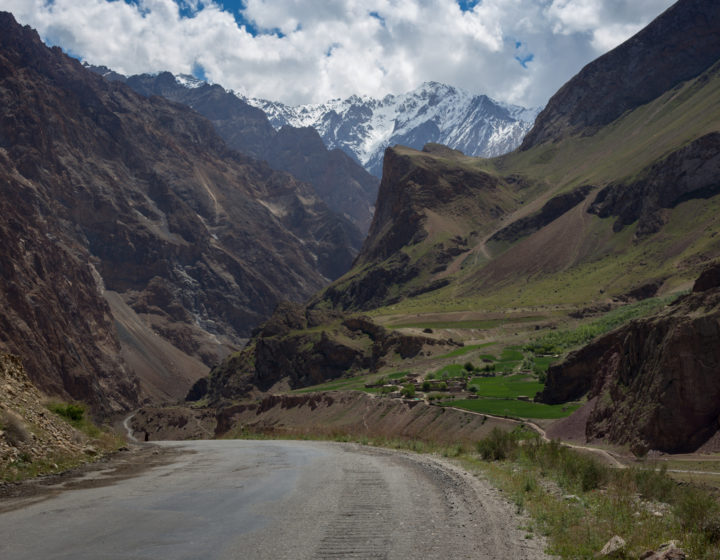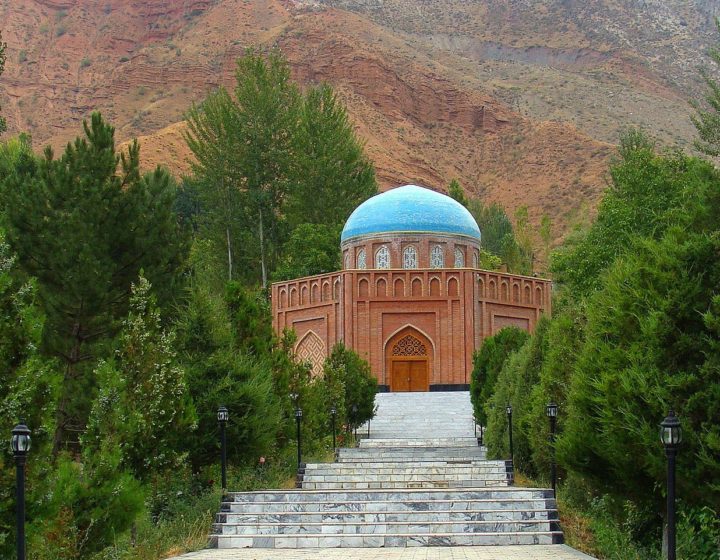Tour overview
Note: Itineraries can be changed and adopted to your requirements. For more information please contact us:
Highlights
Included
- All accommodation
- All transport as outlined in the itinerary.
- Meals – Full Board (B-L-D) B-Breakfast, L-Lunch, D-Dinner
- 1 litter Bottledwater
- All entrance fees, as per itinerary
- Guide Service
Not Included
- Visa fee and visa support
- Beverages other than drinking water
- International flights to/from the start/finish of the trip
- Tips for guide and driver
- Souvenirs
Day 1 Dushanbe
Our guide will meet you in the airport and accompany to Dushanbe. The entire day is dedicated to a guided city tour. First of we will visit Rudake Park, National library, White House, National state seal, House of parliament and Jomi theatre. After it we will walk in National park to make photos of Ministry of Inner Affairs and the second biggest National Flag in the world – 165 m high pole, 30 m wide, 60 m long. After excursion in Central Museum you will have lunch. Then you will visit to Gurminj Museum of traditional musical instruments. To feel real life you should visit Asian bazar. It has colorful goods, fruits and vegetables. We will see today the main highlights of Dushanbe and you will find out many interesting facts about Tajik people. Dinner will be in a traditional restaurant where you try Tajik food.
Day 2 Dushanbe-Kalai Khumb
Today we will drive to Kalai Khum village. You will see Norak water reservoir that is called blue Sea. The highest point of the day is Shurabad pass (2 200 m) and after drive along Afghanistan border starts. This part will amaze you by its unique mountains – it is already Territory of Pamir Mountains. Over the centuries, the Pamirs have inspired the world’s greatest explorers – Marco Polo, Hsuan Tsang, Mirza Muhammad Haidar. And now you also have a chance to travel here. You will drive along natural border – Pyanj River. Having visited the Pamirs, many travellers called this giant mountain system the ocean of white and blue mountains. This night you will spend in a home stay to see the way of local people’s life.
Day 3 Kalai Khumb-Khorog
In the morning we will drive to Khrorog. It is perhaps one of the tiniest cities on the map of the world. It is surrounded by rocky mountains from all four sides. The town was built on the confluence of the 3 rivers where Shokhdara river and Ghund river flow into Pyanj river. On the way to Khorog you will meet Pamir people. A number of anthropological features set the Pamir people apart from the Tajik people. Among the Pamiris, there is a high percentage of people with blonde hair, fair skin and blue eyes. Pamirs Mountains are the highest mountains in the world with human population after the Himalayas in Tibet. Life in the mountains made traditions of local people different from Tajik people.
Day 4 Khorog-Ishkashim
About 40kms along the road to our next stop, Ishkashim, we will stop at Garmchasma hot springs for an (optional) dip in the waters. From here, we enter the Tajik half of the Wakhan Valley (shared with Afghanistan) and pass regional gem mines mentioned by Marco Polo. The most famous mine is Koh-i-Lal ruby mine which is visible from the road. Ishkashim itself may be the regional centre, but it is essentially still a large village and we stay in a traditional style guesthouse here which has a handful of rooms but single room is not available this evening.
Day 5 Ishkashim-Langar
Visit to the nearby village of Namadguti to visit the Khahkha Fortress. This impressive structure rises from a naturally formed platform of rock and dates back to the Kushan era of the 3rd Century. There are a number of these ancient fortresses in the area, and we also visit Yamchun fort, perhaps the most impressive of them. We take a break at the Bibi Fatima hot springs, named for the Prophet Mohammed’s daughter and where local women believe they can increase their fertility. Continuing on we then stop at the 4th Century Buddhist stupas at Vrang, reminders of the ancient pilgrim caravans that passed through the region.
Day 6 Langar-Murgab
Leave behind the lush valleys of the Wakhan Valley and enter a landscape that is rocky, mostly barren but nevertheless dramatic. This is the Pamir Highway we have anticipated, with the route between Khorog and Osh completed in 1931 across a Tibetan-plateau style high altitude terrain. With a total of 240kms to cover today, we anticipate arriving in Murghab early evening.
Day 7 Murgab-Karakul
After breakfast we head for Karakul (135km). We cross several high altitude passes, including Ak-Baital Pass (4655 metres) which is the highest section of road in the former Soviet Union. We descend to Karakul Lake and then cross our final Pamir Highway high pass, the Kyzyl Art (4282 metres), which essentially forms the border between Tajikistan and Kyrgyzstan. Karakul Lake is the highest lake in Central Asia, and at 3915 metres, too high to support any aquatic life. Karakul means “black lake” but in spring, summer and autumn the water is almost always turquoise blue.
Day 8 Karakul-Osh
We depart the high mountains of the Pamir Alay range, leaving behind us the crossroads of Tajikistan, Kyrgyzstan and China. The drive offers a contrast as we encounter lush farmlands and small villages on this side of the mountains, instead of the stark high altitude plateau of Tajikistan. En route we cross the Taldyk Pass (3554m) and enjoy some beautiful views – if we’re lucky we may even catch a glimpse of Peak Lenin, at 7134m the second highest mountain in Central Asia. We expect to arrive in Osh , Kyrgyzstan’s oldest city in the afternoon, with time to explore.
Day 9 Osh-Chichkan
Today we drive to the Suusamyr Valley along the picturesque mountain Osh highway to the Chichkan gorge. Time permitting we take a walk in the area and meet the local shepherds who still adhere to age old traditions.
Day 10 Chichkan-Songkul
Today takes us to stunning Song Kol Lake. The lake itself is 3916m above sea level and is one of the highest alpine lakes in the world.
Day 11 Songkul Lake-Issikkul Lake
Travel to Cholpon-Ata on the north side of Issyk-Kul Lake to the largest and most beautiful lake in Central Asia. There is an optional opportunity to visit the open air museum of Stone Inscriptions in Cholpon Ata. Most of the drawings date from several thousand years B.C. up until the 12th Century A.D.
At 170km long and with a maximum depth of 695 metres, Issyk Kul is the tenth largest lake in the world and with its high levels of salinity never freezes, even in the harshest of winters here. Fed by many rivers, none flow from it contributing to a salt content of around 0.6%. In Soviet times it was a popular spa resort, and ongoing excavations show that there has been settlement around here for 2500 years or so. It is home to a number of different species of fish, many of which can only be found here.
Day 12 Issyk kul-Bishkek
Drive to Bishkek and explore the capital, visiting Ala-Too Square and the History Museum among other sites. Kyrgyzstan’s capital is a modern city, originally founded in 1825 but developed extensively by the USSR and at that time named Frunze after a famous Bolshevik general. With over a million inhabitants it follows the typical Soviet city pattern of wide boulevards and drab apartment blocks, large squares and public parks and before Kyrgyz independence had a majority Russian population, although not now. Although not blessed with the interesting sights of other Central Asian cities, it does have a few things worth visiting – the impressive Ala-Too square, the History Museum and the Orthodox Church, a reminder that not all Russians left in 1991.

